Published by Jeremy. Last Updated on February 7, 2021.
Disclaimers: Our site uses demographic data, email opt-ins, display advertising, and affiliate links. Please check out our Terms and Conditions for more information. Listed prices and attraction details may have changed since our visit and initial publication.
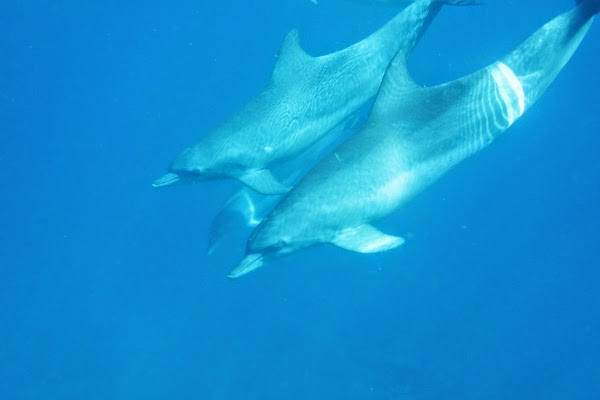
Rather than take part in this debate once the conversation degraded past the point of being civil (so, about 5 minutes in), we decided to take matters in our own hand. We had to find out the facts for ourselves.
We had already done a wild dolphin encounter in Mauritius earlier this year, but to be able to adequately talk about the captive alternative, we made it our quest to take in a private dolphin experience during our conference stay in Mexico. We were signed up for the provided tour with the conference, but unfortunately the boycott got the event to be cancelled (or at least, we think it did. We never received an official notification from our sponsor, which makes the industry-declared “cancellation” seem very suspicious).
Luckily, a representative from Dolphin Discovery invited us to check out their dolphinarium during our stay, outside of the official conference itinerary, to experience their dolphin encounter for ourselves.
What we found was a bit shocking.
✈️ Book Your Next Trip
- • Planning a trip? Find a flight deal.
- • In need of a room? Check out hotel and apartment prices.
- • Taking a cruise? Find a cruise itinerary for your journey.
- • Don't overlook picking up a rental car or day tours as well!
The Dolphinarium at Moon Palace
During the first morning of our stay at Moon Palace, we went to the dolphinarium to check out their dolphins and learn more about this hotly contested activity. But before we get into what we found during our swim, we have to take a step back and clear up an issue that we found paraded around inaccurately during the boycott, and that has to do with how the animals are acquired in the first place.
The most important misconception that travelers have about dolphin encounters is the idea that all dolphins are captured and/or brutally attacked in order to be sent to dolphin exhibits around the world for the pleasure of humans.
This is not the truth. At least, it isn’t in every case.
The problem is that there is a little phrase that often goes missing which goes: “but Mexico has banned captures of wild dolphins in 2002, and imports of dolphins in 2006.” In fact, many countries are trying to be very active in caring for dolphins that are in captive exhibits, and no one seems to want to talk about that avenue at all even though it can be found in a quick Google search. (For more reading on this topic, I liked this report from the World Society for the Protection of Animals a lot).
I’m all for stopping the slaughter and capture of wild dolphins, but if we’re going to have the conversation about capturing dolphins for encounters, we have to point out that not every country allows it and so far no blogger has taken the time to even present this powerful piece of data.
I could discuss Mexico’s practices more, as there are dozens of organizations that set operating standards for this experience, but I want to shift this section of the article to a more first-hand analysis. How are the dolphins in captivity at Moon Palace treated? This lack of first-hand information was my biggest complaint with the boycott in the first place, as I find talking about specific facilities to be the most valuable, so I’m going there straightaway.
Our Observations of Private Dolphin Encounters
What did we notice during our experience swimming with dolphins at Moon Palace? Well, within just a few minutes after our arrival we had a few observations.
The first is that the space the dolphins are in is much larger than other dolphin swims we have seen, but still smaller than I would like to see. The space is segmented into multiple channels where the dolphins are located for the 3-4 one hour encounters that they have each day. In the after hours the segmented areas are opened so they can swim together in pods. I think this is a good start, but considering dolphins normally swim a significant distance each day, more space for the dolphins is always a good thing. (Since our experience, I’ve looked at other facilities in the same organization that do appear to be even larger than this one- an encouraging sign).
The second is that the trainers seem to genuinely care about the dolphins in every capacity. We had a private experience with a trainer who gave us the background on their daily training sessions, daily medical sessions, and what they do with the dolphins when visitors are in the water. They make sure they are taken care of, well-fed regardless of how well they do during training, and ensure limitations on the number of people in the water at any given time depending on the activity and dolphin. This means that the dolphins engaging with the group of twenty had far less required of them than the ones that were engaging with just two.
Since this was my opportunity to really ask as many questions as possible, I went to my two most critical ones. Do they perform any scientific studies with the dolphins and what kind of educational outreach do they provide to the community? If you’re going to keep dolphins, these are two things I’d ideally like to see happening.
There is unfortunately no scientific research that goes on at this particular facility, which I would have liked to see as a means to justify having the dolphins, but many universities do come in and monitor the dolphins for external studies.
For our swim, I’m happy to say that most of the session was focused on the educational aspect of dolphins, including how they live in the wild, how they reproduce, and most importantly, what humans can do to stop polluting the environment to prevent the deaths of wild dolphins. This last one is important to me because it is the biggest takeaway all visitors need to hear. If travelers are going to swim with dolphins, coming away with what they need to do in order to ensure their survival is something that needs to be said more and more. (Hint: don’t litter- especially in the ocean!).
If I had to come up with one complaint from it all, it would be that in our private encounter a few interactive swimming sessions were provided. The first swim was where the dolphins pulled us while we held on to their dorsal fins (one on each side of us). The second, and more troubling, was the swim where the dolphins pushed our feet with their noses with relatively great force. While I am not anti-riding animals like most (I’ve ridden a rescued elephant, camel, horse, donkey, and will likely go dog-sledding one day in my life), this one did make me feel a bit uncomfortable. These animals are extremely strong, but I think my line has to be drawn at this point as it crosses the barrier from educational to show.
Do all of these points give us one overall definitive opinion on captive dolphin encounters? Unfortunately, the answer is no. There is definitely room for improvement, but it is truly hard to say whether that ethical line has been crossed. When it comes to witnessing stress on an animal and being taken out of my comfort zone, my experience swimming with wild dolphins was even more troublesome.
Our Interesting Wild Dolphin Swim
Now that I’ve said my peace in regards to captive dolphin experiences, you may be wondering, how does a wild dolphin experience compare?
Honestly, I felt even worse about myself after having a wild encounter than I did with my captive one!
Let’s flashback to our experience in Mauritius in January 2014, a destination that goes to the top of my list of best island nations anywhere in the world. One morning we had the opportunity to go visit a wild dolphin pod that is known to be in a particular bay every day. Our host had told us if we got there early enough we could swim with the dolphins in the bay and they would be quite playful and curious with us as we snorkeled in the water.
Yeah, that didn’t happen.
While I am thoroughly convinced that the dolphins would have played with us if we got there early enough, as our host who told us it was possible is a great friend and did it personally, we arrived far too late for that thanks to two other tourists not arriving on time. In our case, our boat, as well as about 6 others, spent the next few hours chasing the dolphins out of the bay we hoped to swim with them in!
The overall experience went like this: the boats raced in front of the dolphins, everyone jumped in, snapped some photos, and got out of the water once they had passed to repeat the process of chasing them 3-4 times. The dolphins never stopped to interact with us, never acknowledged we were there, and kept swimming away as the encounter went along as they were leaving the bay like they do every day.
Now I can’t help but ask the question: which is more stressful for a dolphin? Is it a captive encounter where they’ve been trained to be around humans all day, every day, or a wild one where boats chase them every single day even though they have no interest in it? Why is it that one experience gets a pass because it is “natural” but another gets chastised because it puts an untold amount of stress on the animal? It is the result of these experiences that I have to take a step back and actually question what stress is to an animal, and really start to think about what is worse as there are very few scientific studies that actually put this issue out there.
I’m not an expert, so my ability to recommend what is best ends here. All I can say is which made me more uncomfortable personally, and that was the wild dolphin encounter by far.
Unfortunately it Comes Down to This – Do Your Research
If you have time, I’d like you to re-read this article after finishing, because I want to highlight a very important point. In this post I used uplifting text to describe dolphin encounters, while using key negative words when describing wild ones. Skim through and you’ll see the world “chased” several times in the previous section but very few negative words in the private encounter section. I did this on purpose.
These are powerful tools to trick people into jumping on board with a conclusion without presenting any research what-so-ever. This is unfortunately what happened during the recent boycott in the travel blogging industry. Many posts were written to come out in the defense of dolphins, but no facts were presented what-so-ever (and let’s not call documentaries facts because otherwise I have some political propaganda I would like you watch before the next election). I didn’t even go into detailed research in this article, but with a quick Google search I was able to debunk many of the claims that the boycotters put out there.
My point of contention with this whole fiasco was that no one wanted to go to the facility itself and write about their opinions from first-hand experiences. You know, do what we all opened blogs for in the first place. Even worse, many in the industry lobbied such that no blogger would have the opportunity to do the first-hand research in the first place! I’d like to see the response of a print journalist if that ever happened, because I can guarantee it would not have been pretty.
Unfortunately, all I can say is what I know from my first hand experience and that is my wild dolphin encounter made me feel far more upset than the private encounter I had at Moon Palace in Mexico. Yes, dolphin encounters as a whole are not perfect, but there are many out there trying to do the right thing amongst a sea of others that are not (much like the elephant encounters in Thailand and numerous other animal facilities for similar reasons).
What I can say to you if you want to visit an animal experience, be it swimming with captive dolphins or even going out on a wild encounter, is this: do your research and make sure it is accurate.
It is incredibly easy to pull up Google and search for a country’s policies on captive dolphins, find certifications that a specific facility has, and overall get a feel if the encounter is just a business to rob tourists of their money or if they’re trying to provide an educational or research experience that helps the betterment of the species.
If you can’t do that before heading out and taking in a captive animal experience, you probably shouldn’t be going on it in the first place. Although I have to suspect, if you didn’t care even just a little, you probably wouldn’t be reading this article anyway.
Have you been on a private or wild dolphin encounter? Sound off on your opinion in the comments below! Please remember that we’re going for a civil conversation here, and we will be moderating the response accordingly.
About Jeremy

About the Author: Jeremy is a full-time travel writer based in Pittsburgh and primary author of this site. He has been to 70+ countries on five continents and seeks out new food, adventure activities, and off-the-beaten-path experiences wherever he travels.
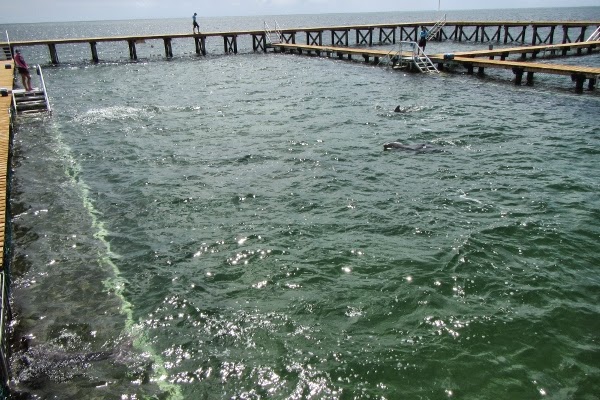
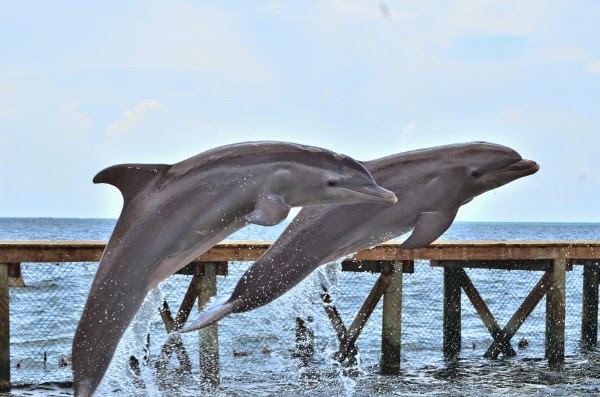
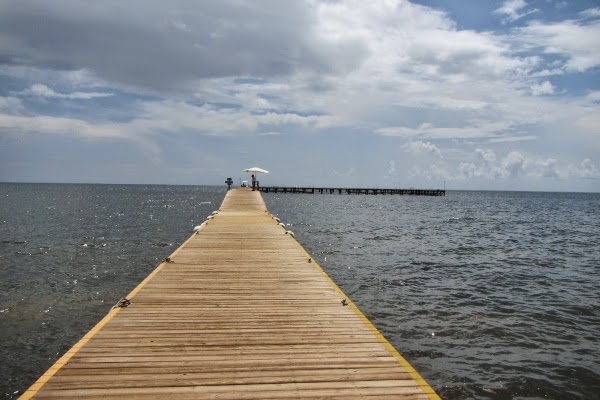
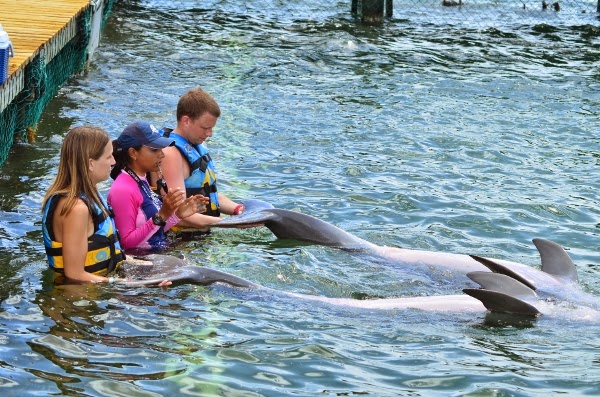
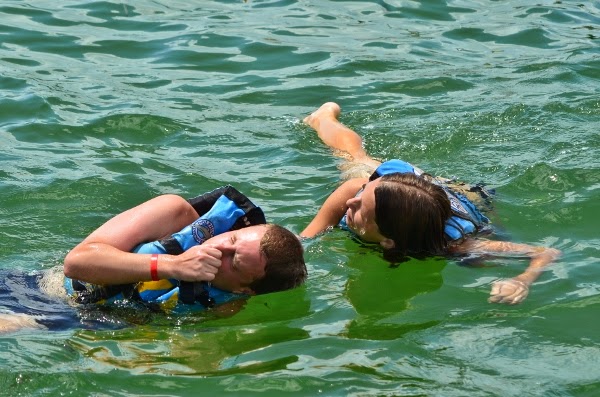
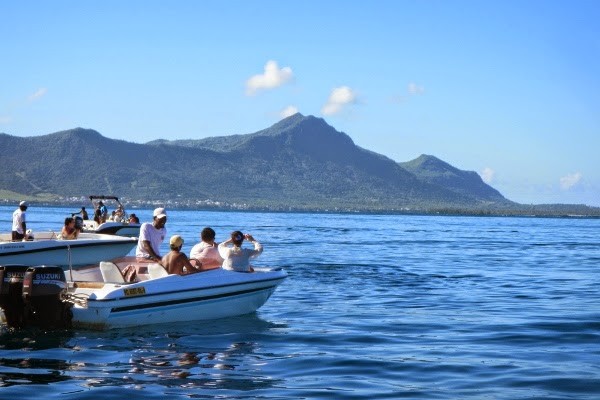
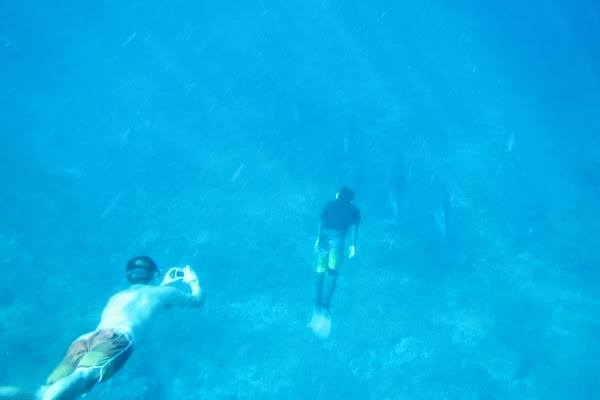
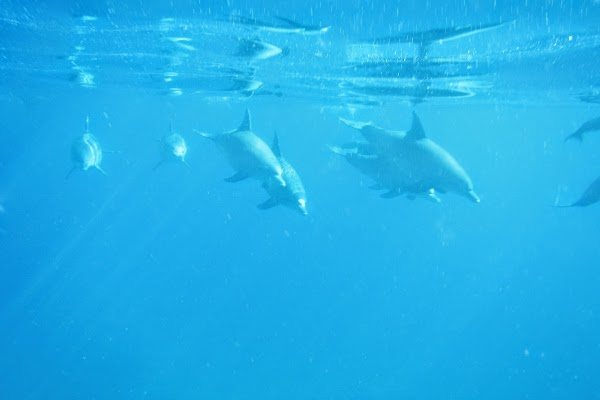
As a former dolphin/sea lion trainer myself I just want to say THANK YOU. You are probably one of the first people I’ve seen that has brought this up and it is the thing that frustrates me the most. The amount of misinformation out there is unbelievable but no one checks sources anymore. And no one OFFERS sources anymore. It astonishes me that ‘documentaries’ like Blackfish can spout the things they do and call them facts when they are anything but. You’re allowed to state your opinions…that’s totally fine…but you are not allowed to state your opinions as facts. Then I meet people who think they’re more of an authority on the subject after watching an hour and a half long movie than I am who has spent 7 years involved in the field (and even I don’t consider myself an authority…not even close). People who have no knowledge or understanding about the natural history of the animals they’re talking about nor how training actually works. Like I said…very frustrating. Especially for the facilities that do a lot of good and contribute millions of dollars a year to education, conservation, and research who are hurt by these falsities.
I agree that there are absolutely zoos and aquariums out there that should be shut down but they’re not all like that. And people should do their research about a facility ahead of time. And if you don’t like marine mammals in captivity that’s fine…you don’t have to go. But don’t put false information out there as a way to get your opinion across…that’s just wrong. There is a very well known travel blogger out there who did just that (about the conference) and when I sent him a lengthy email in response explaining to him the inaccuracies of what he was putting out there he simply brushed my email aside stating no matter what I said it was still cruel. Fine if you think that but as someone who has thousands of readers you should at least be putting out accurate content on your site.
Again thank you for realizing and stating the importance of doing one’s research and forming opinions from that research. It’s something no one does these days and movies like Blackfish are banking on that.
Thank you thank you thank you.